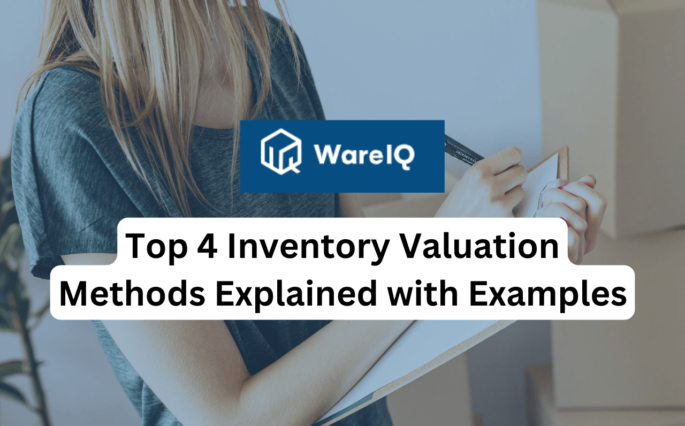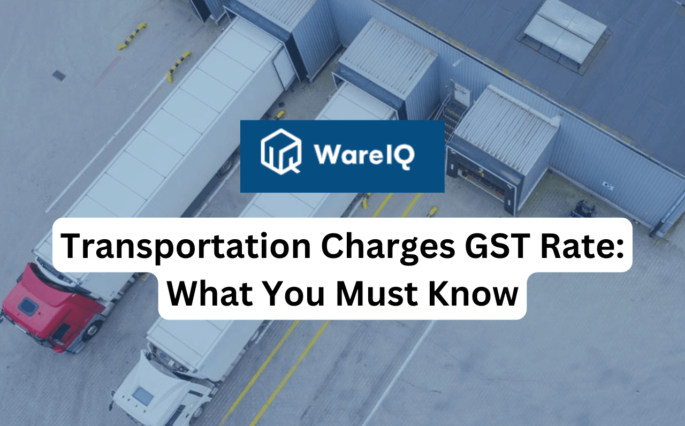Maximising Profitability: Strategies for Ending Inventory Formula


In the intricate world of logistics and inventory management, ending inventory holds a pivotal role in determining profitability. Understanding the significance of ending inventory, its impact on the cost of goods sold (COGS), and strategies to optimise it is essential for businesses aiming to maximise their bottom line.
The ending stock left unsold at the close of an accounting period isn’t just a number on a financial report. It holds significant importance, reflecting a company’s financial strength and how efficiently it operates. This number denotes the value of products that have yet to find buyers by the end of a specific accounting period, be it a month, quarter, or year. Accurately determining this final stock directly impacts the computation of the Cost Of Goods Sold (COGS), consequently affecting the gross profit, which in turn influences the overall profitability of the business.
This article aims to illuminate the significance of the ending stock by outlining its core concepts, the formula applied to calculate it and approaches to enhance it for greater profitability. In a world where logistics and inventory management are at the core of business success, understanding and mastering the ending inventory formula is paramount.
- Understanding Ending Inventory
- Exploring the Ending Inventory Formula
- How to Calculate Ending Inventory?
- Strategies for Optimising Ending Inventory and Profitability
- Importance of Accurate Value of Ending Inventory
- Case Studies of Ending Inventory
- Tools and Resources for Calculating Ending Inventory
- Conclusion
- FAQs About Ending Inventory Formula
- Could you provide a step-by-step example of how to calculate the cost of ending inventory using one of these methods?
- Give examples of situations that may lead to an unintentional ending inventory overstatement.
- What is the concept of ending inventory retail, and how does it differ from traditional ending inventory valuation?
Understanding Ending Inventory
Fundamentally, the ending stock denotes the total worth of goods retained by a business that hasn’t yet been sold by the conclusion of an accounting period. Its significance lies in its direct influence on financial reporting, notably impacting the calculation of the cost of goods sold (COGS) detailed in the income statement. The relationship between the final stock, COGS, and gross profit is deeply intertwined, and any variations in the ending stock can notably affect a company’s overall growth.
For instance, envision a simplified situation: By the end of a quarter, a retailer possesses $50,000 worth of unsold goods. When the cost of goods sold (COGS) for that quarter amounts to $200,000, the calculation for the gross profit stands as follows:
Gross Profit = Sales – COGS
Gross Profit = $250,000 (Sales) – $200,000 (COGS)
Gross Profit = $50,000
In this example, ending stock has a direct impact on the calculation of gross profit. Accurate valuation of ending stock is crucial for making informed financial decisions and understanding a company’s overall financial health.
Exploring the Ending Inventory Formula
The ending inventory formula is a crucial tool in stock valuation. It identifies the worth of goods that stay within stock after a particular accounting duration. The formula consists of various elements, and its utilisation might differ based on the stock valuation technique utilised, for instance, FIFO (First-In-First-Out), LIFO (Last-In-First-Out), or weighted average.
The primary components of the ending inventory formula are as follows:
- Beginning Inventory
This represents the value of stock held at the beginning of the accounting period. It includes goods carried over from the previous period.
- Net Purchases
Net acquisitions cover the worth of items obtained in a specific financial timeframe, factoring in any returned items, concessions, and deductions.
- Cost of Goods Sold (COGS)
COGS pertains to the entire expense linked to goods that have been sold within the stated financial duration.
The ending inventory formula is as follows:
Ending Inventory = Beginning Inventory + Net Purchases – COGS
The choice of stock valuation method (FIFO, LIFO, weighted average) influences how the components are calculated and how they impact the final valuation of ending stock. Each method has its advantages and implications for financial reporting, tax obligations, and profitability analysis.
How to Calculate Ending Inventory?
Calculating ending stock involves a systematic process that is critical for accurate financial reporting and decision-making. Here is a step-by-step guide on how to calculate ending inventory:
Step 1: Determine Beginning Inventory
Begin by identifying the value of stock held at the beginning of the accounting period. This can be found in the financial records from the previous period’s ending stock.
Step 2: Calculate Net Purchases
Calculate the net purchases by summing up all purchases made during the accounting period and subtracting any returns, allowances, and discounts. The formula for net purchases is:
Net Purchases = Total Purchases – (Returns + Allowances + Discounts)
Step 3: Determine COGS
Calculate the cost of goods sold (COGS) for the accounting period. COGS represents the total cost of goods that were sold during the period.
Step 4: Apply the Ending Inventory Formula
Utilise the ending inventory formula to calculate the value of ending inventory:
Ending Inventory = Beginning Inventory + Net Purchases – COGS
Step 5: Accurate Record-keeping
Maintain accurate records of all stock-related transactions and ensure that the calculations are meticulously documented for financial reporting.
Step 6: Consistency in Inventory Valuation Method
Maintain consistency in the choice of stock valuation method (FIFO, LIFO, weighted average) to ensure uniformity and comparability in financial statements over time.
Strategies for Optimising Ending Inventory and Profitability
Optimising ending stock is pivotal for enhancing profitability in the supply chain and logistics industry. Here are strategies to consider:
- Just-in-Time (JIT) Inventory Management
Implementing a JIT stock system helps minimise excess stock by ensuring that goods arrive precisely when needed for production or sale. This reduces storage costs and the risk of obsolescence.
- Demand Forecasting
Employ advanced demand forecasting techniques and data analytics to predict customer demand accurately. This helps in maintaining optimal stock levels, reducing overstocking, and preventing stockouts.
- Inventory Segmentation
Segment stock based on factors such as demand patterns, product life cycles, and profit margins. This allows for tailored stock management strategies for different categories of products.
- Supplier Collaboration
Collaborate closely with suppliers to streamline the supply chain, negotiate favourable terms, and establish reliable delivery schedules. This reduces lead times and enhances stock turnover.
- Technology Adoption
Embrace stock management software and data analytics tools to gain real-time insights into stock levels, demand patterns, and supply chain efficiency. These tools facilitate data-driven decision-making.
- Safety Stock Management
Determine appropriate safety stock levels to mitigate the risk of stockouts caused by unforeseen fluctuations in demand or supply chain disruptions.
- Regular Auditing
Conduct regular stock audits and cycle counts to ensure accuracy in stock records. Identify and rectify discrepancies promptly.
- ABC Analysis
Apply ABC analysis to categorise stock items into A, B, and C categories based on their value and importance. Allocate resources and attention accordingly to optimise the stock mix.
Importance of Accurate Value of Ending Inventory
The importance of having an accurate value for ending inventory cannot be overstated. An accurate ending stock valuation impacts financial statements, profitability analysis, and strategic decision-making. Here are key reasons why precision in ending stock matters:
- Financial Reporting
Accurate ending stock values directly affect financial statements, such as the balance sheet and income statement. Errors in ending stock valuation can distort financial performance indicators and mislead stakeholders.
- Profitability Analysis
Ending stock plays a pivotal role in calculating the cost of goods sold (COGS) and, consequently, gross profit. Accurate gross profit figures are essential for assessing profitability and making informed business decisions.
- Tax Implications
Accurate ending stock values are crucial for tax calculations, including income tax and property tax assessments. Errors can lead to tax overpayments or underpayments.
- Strategic Decision-Making
Businesses rely on ending stock data to make strategic decisions, such as pricing strategies, production planning, and stock replenishment. Inaccurate data can lead to suboptimal choices.
Case Studies of Ending Inventory
Let’s explore real-world examples that illustrate the successful implementation of ending stock strategies in logistics and stock management, along with their impact on profitability.
Case Study 1: Just-in-Time (JIT) Implementation
A manufacturing company implemented a JIT stock system, reducing its average ending stock levels by 30%. This resulted in substantial cost savings through reduced warehousing expenses and lower carrying costs. The company also experienced improved cash flow and enhanced profitability.
Case Study 2: Advanced Demand Forecasting
An e-commerce retailer leveraged advanced demand forecasting algorithms and machine learning to predict customer demand accurately. By maintaining optimal stock levels and reducing overstocking, the retailer achieved a 15% increase in gross profit margins.
Tools and Resources for Calculating Ending Inventory
For businesses seeking efficient ways to calculate ending stock, several tools and resources are available:
- Inventory Management Software
Invest in stock management software solutions that offer features for accurate ending stock calculations. These software packages often provide built-in formulas and reporting capabilities.
- Excel Spreadsheets
Excel can be a powerful tool for manual ending stock calculations. Create customised spreadsheets with formulas tailored to your stock valuation method.
- Online Calculators
Numerous online calculators are available for businesses to compute ending stock based on different stock valuation methods. These calculators simplify the process and reduce the risk of errors.
- Consultation with Experts
When in doubt or dealing with complex stock scenarios, consider seeking consultation from financial experts or consultants with expertise in stock management.
Conclusion
In the dynamic world of logistics and stock management, mastering the ending inventory formula is essential for maximising profitability. Ending stock serves as a critical indicator of a company’s financial health and operational efficiency. Accurate valuation of ending stock directly impacts financial statements, profitability analysis, and strategic decision-making.
By understanding the components of the ending inventory formula and exploring strategies for optimisation, businesses can achieve greater efficiency, reduce costs, and enhance profitability in the supply chain. Implementing techniques such as Just-in-Time stock management, demand forecasting, and technology adoption can lead to tangible improvements in ending inventory levels and, ultimately, the bottom line.
Finally, ending stock is not just a financial metric; it’s a strategic asset that, when managed effectively, can unlock higher profitability and sustainable growth in the world of logistics and supply chain management. Implementing the right strategies and utilising appropriate tools will empower businesses to thrive in this competitive landscape.
FAQs About Ending Inventory Formula
Could you provide a step-by-step example of how to calculate the cost of ending inventory using one of these methods?
Certainly, calculate by adding the beginning stock to net purchases and subtracting the cost of goods sold (COGS). Here are the steps:
- Determine Beginning Inventory: Find the initial stock value from the previous period’s ending stock records.
- Calculate Net Purchases: Sum up all purchases made during the period, subtracting returns, allowances, and discounts to get the net purchases.
- Determine COGS: Calculate the cost of goods sold (COGS) for the period.
- Apply the Formula: Use the ending inventory formula: Ending Inventory = Beginning Inventory + Net Purchases – COGS.
- Record-keeping: Accurately document all stock transactions for precise financial reporting.
Give examples of situations that may lead to an unintentional ending inventory overstatement.
Unintentional overstatement can occur due to errors in recording, misplaced goods, unaccounted damaged/obsolete stock, overestimation of inventory’s worth, and failure to adjust for returns/allowances.
What is the concept of ending inventory retail, and how does it differ from traditional ending inventory valuation?
Ending stock retail focuses on the expected retail selling price, considering market trends and customer demand. At the same time, traditional valuation emphasises the cost of inventory in terms of purchase or production cost.








